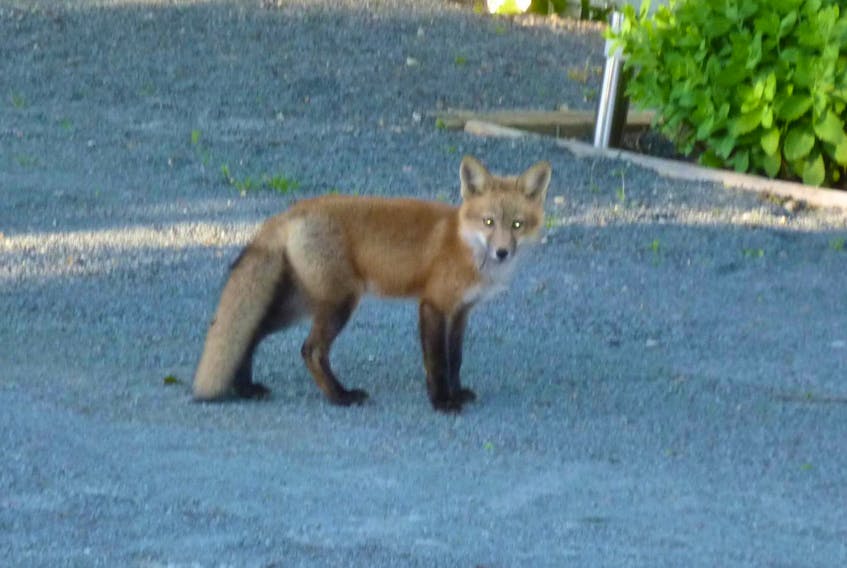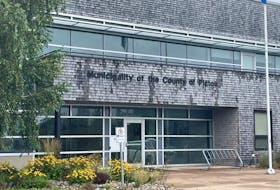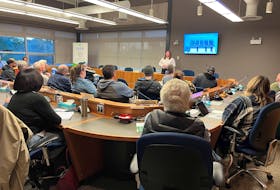Thousands of wild animals and birds are killed or injured on Nova Scotia roads every year. Many of those events are preventable, according to the Sierra Club Canada Foundation (Atlantic Chapter).
The foundation has developed Watch for Wildlife, a wildlife/vehicle collision prevention program that encourages Nova Scotians to drive with an awareness of wildlife on the roads — and do what they can to prevent collisions that result in wildlife deaths or injuries.
Sierra Club members in Nova Scotia say they are committed to raising awareness of “the impacts of vehicle collisions on wildlife, people, the economy and insurance costs.”
Active in the Sierra Club for many years, Wanda Baxter pitched the idea for Watch for Wildlife about four years ago. The South Shore resident is now the program’s manager.
“I had witnessed collisions with wildlife, and the more I got into it, the more I found there was a real need for attention to this issue,” says Baxter. “This is not just a Nova Scotia problem — it’s international, and the numbers are staggering. Vehicles and wildlife don’t mix well.”
She says speed is a big factor.
“People drive too fast, even on country roads,” says Baxter. “People drive well above the speed limit on my road, and wild animals don’t have a chance. I see a lot of roadkill there.”
Baxter says tourists, too, should be more informed about the abundance of wildlife in Nova Scotia. There’s little information for tourists about the presence of wildlife on or near roadways, or on how to respond to an accident involving wildlife.
“I have seen two collisions with deer, and tourists were involved on both occasions,” says Baxter. “It was an emotional experience for them. They felt helpless.”
Baxter gives credit to the Department of Transportation and Infrastructure Renewal for adopting wider cuts along roads, creating more space between roads and tree lines — and making it easier for drivers to see wildlife.
Most motor vehicle collisions with wildlife occur during dawn and dusk. Watch for Wildlife offers these tips for preventing collisions:
Watch your speed: Collisions with wildlife can sometimes be avoided if motorists have time to slow down, especially on rural roads.
Scan ahead: Scanning ahead for animals helps motorists to see wildlife before they are in the path of the vehicle. Watch especially for the light of their eyes reflecting your headlights at night, and use high beams as often as possible. (Unfortunately, moose eyes don’t reflect well).
Honk your horn: A few short blasts can help to alert animals to get out of the way, instead of instinctively freezing in place. (Turtles, snakes and birds, not so much.)
Brake gently: If an animal is on the road, brake gently to slow your vehicle — but don’t swerve or stop suddenly. It’s important that any reaction to avoid wildlife doesn’t endanger yourself or other drivers.
Proceed cautiously: Animals can be unpredictable, so if you see an animal on or near the road, slow down to observe their actions. Animals often travel together and young animals follow their mothers. Scan your surroundings, then proceed cautiously.
Flick your lights: Warn oncoming vehicles of potential wildlife hazards ahead of them. Even if oncoming drivers don’t understand the signal, they will recognize you are giving them a warning of some kind and will likely pay more attention to what’s ahead.
Don’t litter: Garbage and food waste thrown from vehicles attract animals and birds to the road, and puts them in danger of being killed or injured.
Additionally, the Traffic Injury Research Foundation offers the following tips for drivers who do have a collision with an animal:
- Position your vehicle safely off the road. Assess yourself and your passengers to ensure everyone is OK.
- Check to see if the animal is dead or alive (from a safe distance). If the animal is dead, check to determine if any other animals are still with it. If the animal is alive, or there are youngsters present, call a wildlife rescue group such as Hope for Wildlife, or the Department of Natural Resources (1-800-565-2224).
- If the collision has caused significant damage to your vehicle, call 9-1-1 to connect with the police and then contact your insurance company.
Watch for Wildlife encourages motorists to report collisions that result in wildlife death so that carcasses can be removed from roads and shoulders. This prevents predator birds and animals from feeding on them, which could cause additional collisions with wildlife.
Young animals will often stay with their parents, so it is not unusual — and quite disturbing, actually — to see deceased adult animals on the road with one or two lifeless babies nearby.
Motorists who report collisions with wildlife, especially species at risk, can help wildlife managers and transportation designers identify hotspot collision locations and species-movement patterns. They can use this important data to develop migration measures such as warning signs, wildlife corridor underpasses and overpasses, and fences.
Watch for Wildlife worked with the Department of Transportation and Department of Natural Resources to develop a brochure on how to prevent and respond to wildlife vehicle collisions. A local South Shore company, Helping Nature Heal, is also referenced as a sponsor.
The brochure is available at Service Nova Scotia offices, tourist bureaus and environmental organizations. It can be downloaded at www.watchforwildlife.ca.
Baxter says Watch for Wildlife plans to deliver presentations to municipalities across Nova Scotia in the new year to spread awareness.









